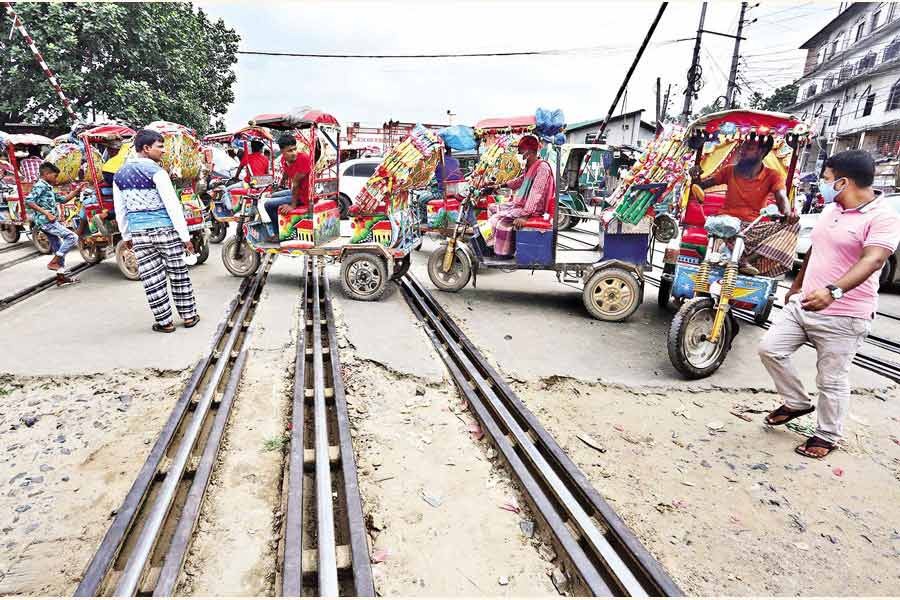Can the country's unsafe level crossings be made reasonably safe for pedestrians and vehicles using those and the trains running on railway tracks? If the latest initiatives taken jointly by the Bangladesh Railway (BR), the Local Government and Rural Development (LGRD) and road transport and bridges department take practical shapes, accidents and fatalities at level crossings --both authorised and unauthorised -- may drastically come down. Of the 2,561 level crossings in the country, 1,149 are unauthorised and of the 1,412 authorised, 964 are unmanned. It is surprising that the serious types of accidents like the one at Joypurhat level crossing in which 12 people were killed and several others injured last month do not occur often. The accident happened when a train in full speed rammed into a bus crossing that level crossing. Casualties involving pedestrians and motorbike riders who take unnecessary risk to get over the rail tracks are often ignored on the assumption that they invited their own peril. To a large extent, this may be true; but if the system could stop such daredevils at the barrier in time, victims' lives could have been saved.
The recent meeting participated by representatives of the railway ministry, the BR, LGRD and other agencies concerned have decided to bring down the number of illegal level crossings, construct speed breakers on each side, post gatemen with the necessary paraphernalia in waiting-cum-store rooms and even build overpasses and underpasses where possible so that no open and unsafe level crossing remains a death trap. No level crossing however equipped with advanced system can be one hundred per cent safe for practical reasons. Even the CCTV-operated gates may at times fail to detect the exact position of humans, other living creatures and vehicles trapped on the level crossing in thick fogs or snow or during heavily inclement weather. The introduction of light emitting diode (LED) technology in Britain has highly improved the performance but it does not prove equally efficient in case of automatic half barrier (AHB) and Automatic Barrier Crossing Locally Monitored and Automatic Open Crossing Locally Monitored. Notably, level crossings in Britain are among the safest in the world.
In terms of speed and frequency of trains, Bangladesh has an advantage because slow trains give extra seconds for saving lives and but long intervals between trains do not hold back pedestrians and vehicles quite often, causing gridlocks on both sides. So, if the latest technologies of automatic versions can be introduced, they can greatly improve safety at level crossings. Mere speed breakers and employment of gatemen will not be of great help. At Joypurhat, as the investigation suggests, the gateman was either sleeping or dozing and failed to close the gate in time.
The best recipe is, of course, construction of overpasses and underpasses. All the government ministries and departments concerned should think of implementing such projects gradually. Where such infrastructure cannot be put in place, the latest automatic systems should be introduced. Movements of both trains and vehicles will increase in the future. So, such devices will help keep level crossings safer. At the same time, the road space and its elevation have to be made ideal for easy pass-out and wait. The modern signalling devices, prominent as they are, can also alert level crossing users of the necessary precautions.


